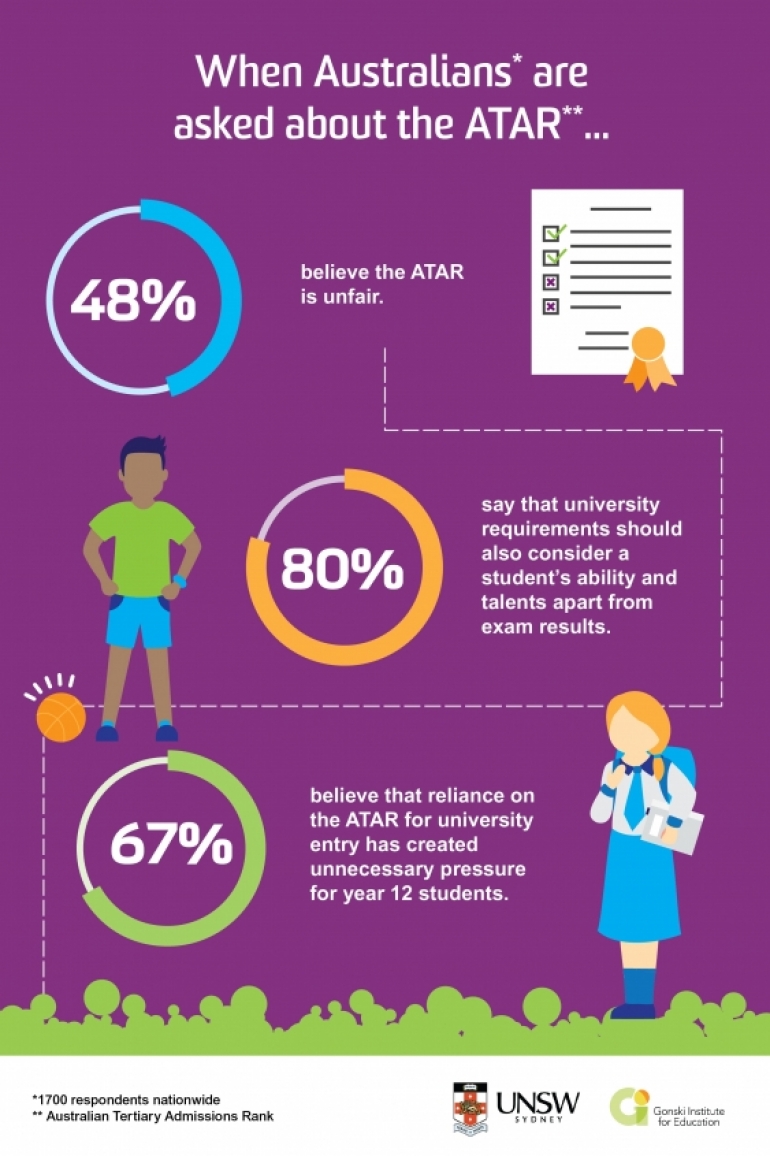New research shows the community wants a range of skills other than those that relate to 'stressful' Year 12 exams to also be considered for university entry assessment.
On day of the first of the 2019 Higher School Certificate exams, UNSW Sydney’s Gonski Institute for Education is releasing new survey findings that show most people want student ability and talents outside of end-of-school exam results to be factors used in determining their university entry ranking.
And two thirds feel the reliance on the Australian Tertiary Admission Rank (ATAR) for university entry creates unnecessary pressure on Year 12 students.
These results from a new national survey undertaken by UNSW Sydney’s Gonski Institute for Education come as high school students in most states are about to sit their final exams.
Institute Director, Professor Adrian Piccoli, a former NSW Education Minister, said the UNSW survey results support academic research that suggests relying on an end-of-school series of exams as the primary means to gain entry to a university is not the best predictor of a student’s overall ability, nor are they the most equitable.
Professor Piccoli said: “There is a growing body of work that shows one off exams, which are supposedly meant to measure a student’s whole of school experience, often do not accurately measure their skills, potential or overall ability”.
“Like NAPLAN, the HSC scores are used to measure a very narrow range of student abilities which, under the current ATAR system, creates an enormous amount of pressure for all those involved.”
A total of 80% of all respondents to the Gonski Institute survey agreed university requirements should also consider a student’s ability and talents outside the classroom.
While over 57% say ATAR scores create unnecessary pressure on Year 12 students, that number rises to 75% for people who finished high school but did not do any tertiary study.
Professor Piccoli said: “Schools are also under pressure to ensure their students achieve high ATAR scores. School ranking tables created from Year 12 exam results effect a school’s reputation and this measure doesn’t necessarily reflect the quality of education available at schools but rather how their students performed in various tests.”
There are strong connections between achievement in the ATAR and the socioeconomic background of the high school, with higher achievement generally being associated with a higher socioeconomic status (SES).
Professor Eileen Baldry, Deputy Vice Chancellor, Equity Diversity and Inclusion UNSW says: “This inequity associated with ATAR scores and disadvantaged schools poses significant problems for universities in offering places to the most talented students across the country if we just use the ATAR results.
"Those with high capability but who come from educationally disadvantaged backgrounds, particularly low SES, Indigenous and regional, rural and remote students, are less likely to achieve high ATARs, not because they are not talented but because the ATAR is not a fair measure of their talent and capacity to success at university. UNSW, like other universities, already has and is working towards further alternative pathways into university that take into account a range of student talent and capability outside of ATAR.”
The release last month of another academic report, ‘Beyond ATAR: a proposal for change’, published by the Australian Learning Lecture supports the Gonski Institute’s findings and urged tertiary education providers to design entry pathways that better align candidates’ interests, capabilities and aspirations with the educational opportunities on offer, and better reflect evidence about the progress and potential of learners.

